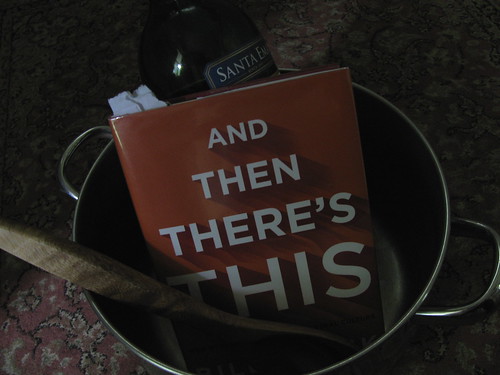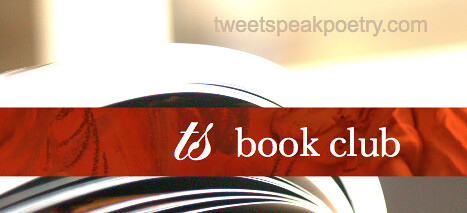
Viruses used to be simple. I'd sneeze, you'd catch my cold. Those were the days.
Yesterday, I perused a bunch of articles about Penenberg's new book
Viral Loop: From Facebook to Twitter, How Today's Smartest Businesses Grow Themselves Reading these articles, I learned that spreading a cold just got more complicated. Not impossible, mind you, but way past a simple sneeze.
You can read some of the informative articles (I've linked to them at the bottom of this post). Or you can grab the high points here. These are the Top 10 steps to make your blog or book go viral...
1. MENTION your blog or book a lot.
Stone Crossings. (Um, that's just me mentioning my book. I think it's very important to follow these steps with the same level of dedication a germaphobe would have about washing her hands. Because the minute I mentioned
Stone Crossings, you may have washed it away (sorry, this does not imply that you are a germaphobe).
Anyway, whether or not you're annoyed by yet another mention of
Stone Crossings is probably secondary. As Bill Wasik learned when trying to
stop Peter Bjorn and John, even bad buzz can be good.
Stone Crossings. :)
In all seriousness, I would be very careful about this step. It's better if
other people mention your blog or book; see #4 below.
2. GET COVERAGE on popular blogs. Trust me, a bikini just won't do. It's got to be real coverage, like full body armor. Oprah, Rick Warren, Paris Hilton, where are you? I need coverage.
(I was going to mention
Stone Crossings again here, but I was afraid to annoy you. However, I SHOULD mention that Penenberg got coverage on popular tech blogs, because his book is technically technical. Still, I bet he wouldn't mind a footnote from Paris Hilton. Viruses aren't necessarily fussy about how they spread. In my case, I figure everybody could use a little grace, so I'm not going to flinch either when Paris decides to make a video about
Stone Crossings: Finding Grace in Hard and Hidden Places.)
3.
TWEET A LOT. That's what Penenberg is doing. And from what I can tell by cruising his tweets, 'New' is a vital component. He tweets about
Newsday,
Newsweek, and the
New York Times. (Ah, serendipity! I live in New York. Do you think this will tip the scales for sales of
Sto.. Oh, seriously, I couldn't bring myself to say my book name again. Maybe you could say it for me?)
4.
TWEET Retweetably. Did you know there are scientifically proven ways to get retweeted on Twitter? There are. And there are ways to pretty much guarantee being ignored. I've used a few myself, in both directions.
Unfortunately,
the article that will tell you how to get retweeted didn't have any data on the usage of two words very dear to me:
Stone Crossings. However, if these words count as self-reference, they would reduce my chances of being retweeted. Because, as the article will tell you, "Tweets about work, religion, money and media/celebrities are more retweetable than those involving negative emotions, sensations, swear words, and self-reference." Oh, and I was sad to learn that I must release my penchant for the semi-colon. It's the least retweetable form of punctuation.
5. OFFER VALUE to people. Penenberg notes that you can't control a viral loop. Bad things might happen if you try (or not). The best thing to do is give people something they want to spread the word about. As Penenberg says, "To get it, you have to give." If you're trying to make your blog go viral, this isn't so hard. Write well. Be generous with links. Highlight the good work of others. Books are trickier. You can do
some giveaways or
provide excerpts and reviews. But a book is a material object. That obviously complicates matters.
6. Recruit a design firm to DEVELOP
an interactive website. I like this idea. It seems simple enough. When someone rolls over the Viral Loop website icons, they pop up messages like, "Click to explore bebo's story" and "Click to explore Tupperware's story."
How hard could it be to do this for my book? I could have little messages that say, "Click to explore the Evocative Creek Story" or "Click to explore the Fifth-Wife Car Story." You know, stuff like that. The only hard part of this step, in my humble opinion, could be the price tag. (Still, maybe I should talk to cool designer
23 Degrees.)
Penenberg's website also offers visitors a wiki opportunity, where they can add their own information or provide links and commentary. Would this work as well for a non-tech book? What do you think?
7. Find someone to DEVELOP A FACEBOOK AND iPOD application/widget. On the app, include a click-through button to your blog or buy-this-book page. Penenberg's application includes infographic, game, and research project related to his book. It estimates the real time value of users to various social networks, like Facebook.
Btw, did you know that Michael Jackson is apparently worth more than God? The Viral Loop app says so. (Hey,
Chris Cree, HighCallingBlogs techno-genius... I need a Facebook and iPhone app for
Stone Crossings. Is that too much to ask? Check it out, I already designed the art— see top of this post)
8. MAKE YOUR FACEBOOK APP/widget topical. Not as in topical skin cream, but as in
make it relate to what you're trying to spread. This is obvious. The problem is that it's not simple. For someone like Penenberg, it takes creativity, but it's not impossible to create an app that will test and promote the theories of a technical book. However, as you've seen when you looked at my artwork for a
Stone Crossings Facebook app (you did look, didn't you? Click picture for enlarged view.), well... who would know whether to laugh or cry at the absurdity of a widget on grace.
9. GET INVITED to be a guest Editor at Publisher's Weekly. (Anybody have some spare PW stationery sitting around? Bring it over and we can secretly pen a few invitations to ourselves. :) Obviously, this step is going to take some finegaling. In the meantime, though it might be a conflict of interest for me, as Managing Editor of
HighCallingBlogs to invite myself to promote
Stone Crossings at that awesome site, you could get to know me and someday get your blog or book featured.
10. USE EMAIL opportunities.
Calacanis notes that he gets about a 60% RSVP rate through email, versus 30% from Twitter and 10% from Facebook. I'd say this is the one to be most careful about. Nobody likes to be spammed with read-my-blog or read-my-book notices in their inbox. Legitimate ways to email a list include offering a
Subscribe by Email option in your sidebar.
If you made it this far, I'm assuming you're truly interested in making your blog or book go viral. These days it takes more than a simple sneeze. Still, I can say "God bless you."
P.S. It doesn't hurt to
make a video too. Sorry, that's 11 steps to viral success.
RELATED ARTICLES:
CrunchGear's
Viral Loop: Using Facebook and the iPhone to Promote Something Called a 'Book'The New York Observer's
Adam Penenberg's Crazy Viral Book BlitzFast Company's
Viral Loop: Jason Calacanis Q&A From the Top of the Leader BoardPublisher's Weekly's
Viral Issue: The Viral LoopFast Company's
Report: Nine Scientifically Proven Ways to Get Retweeted on Twitter (this one's pretty cool because it also includes words most likely to get you retweeted and those most likely NOT to get you retweeted)
D: All Things Digital's
Viral Loop: What Are Your Facebook Friends Worth?Mediaite's
Viral Loop: For Facebook, Michael Jackson is More Valuable than GodFast Company's
Facebook's Mark Zuckerberg on the Value of Viral LoopsTrenchwar's fun theory
What Do Ninja Turtles, Hush Puppies and Pokeman All Have in Common?HighCallingBlog's
7 Easy Tips to Grow Your Blog AudienceOriginal Viral Loop art by
Studioe9. Viral Loop Christian Parody art by L.L. Barkat.
Labels: Adam Penenberg, Facebook, Facebook viral, increasing blog traffic, Twitter, Twitter viral marketing, viral book promotion, Viral Loop, Viral marketing


![Reblog this post [with Zemanta]](http://img.zemanta.com/reblog_e.png?x-id=69ceddab-cf54-495f-bda6-531019781ce9)

![Reblog this post [with Zemanta]](http://img.zemanta.com/reblog_e.png?x-id=386f00a8-0a0d-4cda-9208-27f6e0bd3a84)














